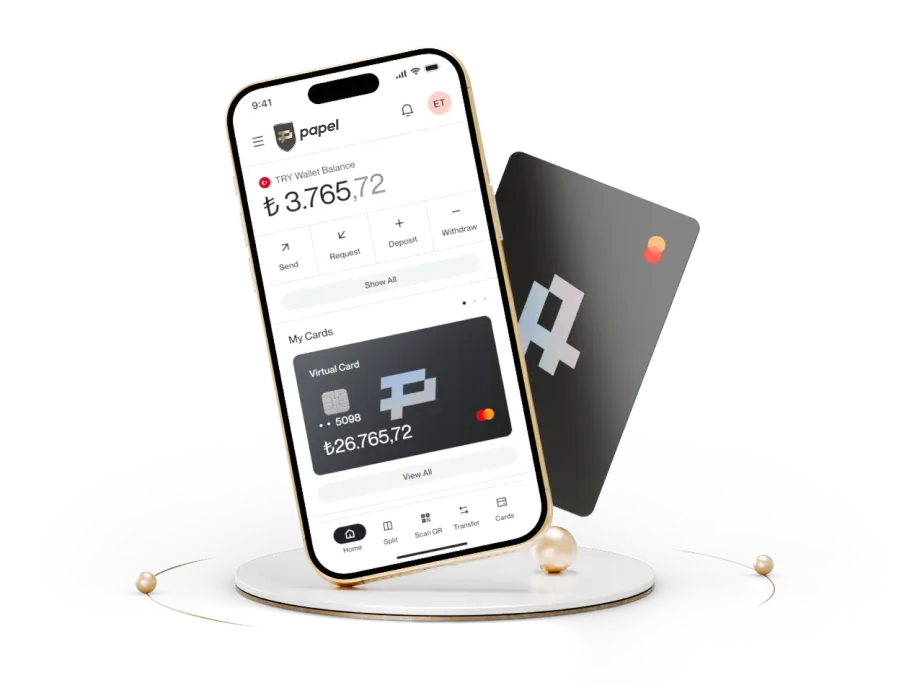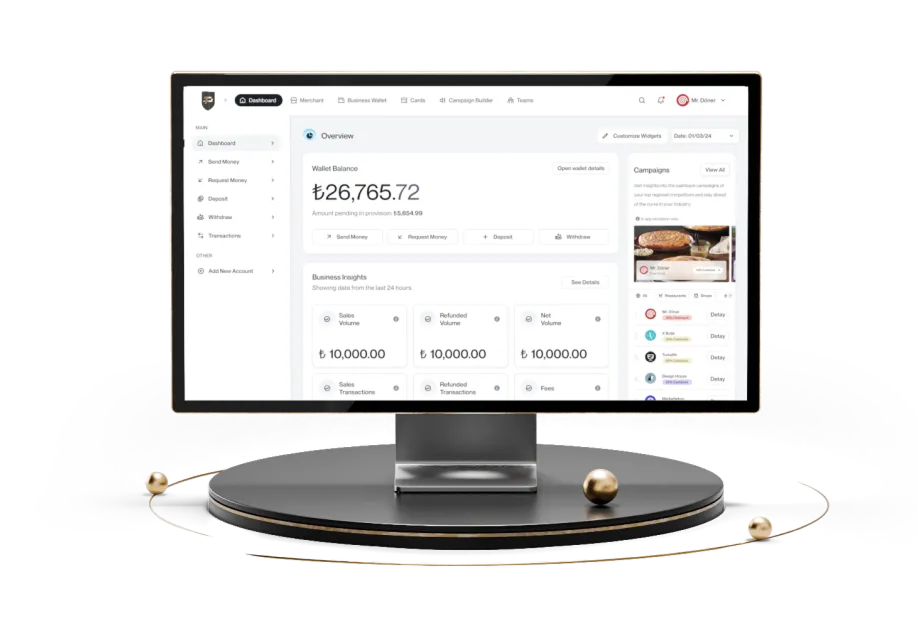What is a Prepaid Card? Its Uses and Benefits
They allow spending only up to the available balance, much like the cash we carry in our wallets. Prepaid cards, considered 'digital cash,' are versatile for all bill payments, cash withdrawal transactions, and shopping.
Advantages of Prepaid Cards
Though the first examples emerged in the 1970s, prepaid cards in the modern sense began to spread at the beginning of the 2000s. They were quickly adopted, especially by population groups without access to banking services, and have found widespread use in finance, telecommunications, and retail sectors.
The advantages of prepaid cards include:
- Allowing spending only up to the available balance,
- Providing a secure payment experience,
- Being usable in all purchases,
- Eliminating the need for a bank account,
- Enabling cash withdrawals,
- Aiding in budget planning and thus promoting savings,
- It is usable without issues for individuals with low or no credit score.
Prepaid cards also provide significant benefits to their users through reward systems like cashback.

Disadvantages of Prepaid Cards
Despite offering numerous advantages to their users, prepaid cards also have disadvantages. One of these needs to contribute to the credit score. Regular credit card usage also contributes to a person's credit score, but using prepaid cards does not help increase credit scores such as the Findeks Credit Score.
Another disadvantage of prepaid cards is the lack of installment payments compared to credit or bank cards. Users wanting to spread their costs over installments in some purchases cannot benefit from prepaid cards. Lastly, certain prepaid cards may charge transaction or card fees for cash withdrawal or usage. Although these fees are generally lower than credit card fees, researching limits and fees before obtaining a prepaid card can be beneficial.
How to Use a Prepaid Card
Prepaid cards offer ease of use, similar to bank or credit cards. Many prepaid cards have an expiration date, CVV or CVC code, and card number, making them usable for physical and online shopping. Moreover, money transfers can also be made easily. Prepaid cards also facilitate cash withdrawals, efficiently meeting cash needs when card payment is not possible.
Loading money onto prepaid cards is quite simple. Many companies allow loading the card balance through multiple methods. Some of the methods that millions of users worldwide prefer to load money onto their prepaid cards include:
- Money transfer,
- Loading through ATMs,
- In-app transfers,
- Loading money at partner stores,
- Regular loading can be done by setting up automatic reload instructions with a credit card.
Shopping with a Prepaid Card
Prepaid cards offer ease of use in many different areas, standing out with their convenience. The balance loaded onto these cards can be easily used in physical and online shopping. Prepaid cards are valid in almost all areas where credit and bank cards are used. Businesses can easily accept payments without needing any additional hardware. Another advantage of these cards is the rapid completion of balance loading. With advancing technology, balance can be loaded onto the card within seconds through a mobile application, allowing users to complete their shopping immediately and benefit from cashback, discounts, or loyalty programs.
Are Prepaid Cards Safe?
Many prepaid cards are subject to the same security certificates and protocols as bank and credit cards, with additional measures such as PIN codes enhancing security for prepaid card users. Furthermore, the ability to spend only the loaded balance limits the potential loss in case of a security breach. Thus, prepaid cards that have passed necessary audits and have licensing authority are considered safe.
On the other hand, to protect against cyber-attacks, users should also not share their password and card information with anyone and avoid shopping from unsafe internet sites.

Prepaid Card Fees
Prepaid cards, becoming increasingly popular thanks to their ease of use and high transaction limits, are offered by various fintech companies and banks. Limits and fees may vary depending on the country or the providing company, but the increasing competition turns to the advantage of consumers.
In Turkey, many companies operate in this field, having passed the inspections and obtained licenses from regulatory bodies like the Central Bank of the Republic of Turkey (CBRT) and the Financial Crimes Investigation Board (MASAK). Limits and fees vary from company to company. Transactions can be made with higher limits, especially for prepaid cardholders who have completed their identity verification.
Papel, licensed by the CBRT as an electronic money and payment institution, stands out in this field by offering numerous advantages with its prepaid virtual card, Papel Virtual Card. For information on limits and fees, you can visit this page and learn more.
Differences Between Prepaid Cards and Bank Cards
Although prepaid cards and bank cards share similar use areas and features, they also have some fundamental differences. Firstly, there is no need to open a bank account to acquire a prepaid card.
Moreover, while many bank cards allow spending of non-existent funds, essentially lending, prepaid cards only permit spending of the existing balance.
Frequently Asked Questions and Answers About Prepaid Cards
How can I get a prepaid card?
One must apply to the selected bank or financial institution to obtain a prepaid card. Applications for prepaid cards offered by fintech companies are typically made through the company's website or mobile app. Following their application, anyone who meets the necessary conditions can become a prepaid cardholder.

Can I withdraw cash from ATMs with a prepaid card?
Yes, generally, prepaid cards allow for cash withdrawals or deposits at ATMs, depending on the agreements made by the issuing company.
Can a prepaid card replace a credit card?
Prepaid cards can be used for shopping, similar to credit cards. However, their usage purposes differ. Credit cards allow for spending first and payment later, while prepaid cards require loading funds beforehand, limiting spending to the available balance.
What types of prepaid cards are available?
Prepaid cards are divided into physical and virtual categories. Virtual cards are generally used for online purchases, whereas physical cards can be used for online and in-store payments.
Additionally, different prepaid cards are available to cater to specific needs, including single-use prepaid cards that can only be loaded once, whether in physical or virtual form, and rechargeable prepaid cards for ongoing use.

